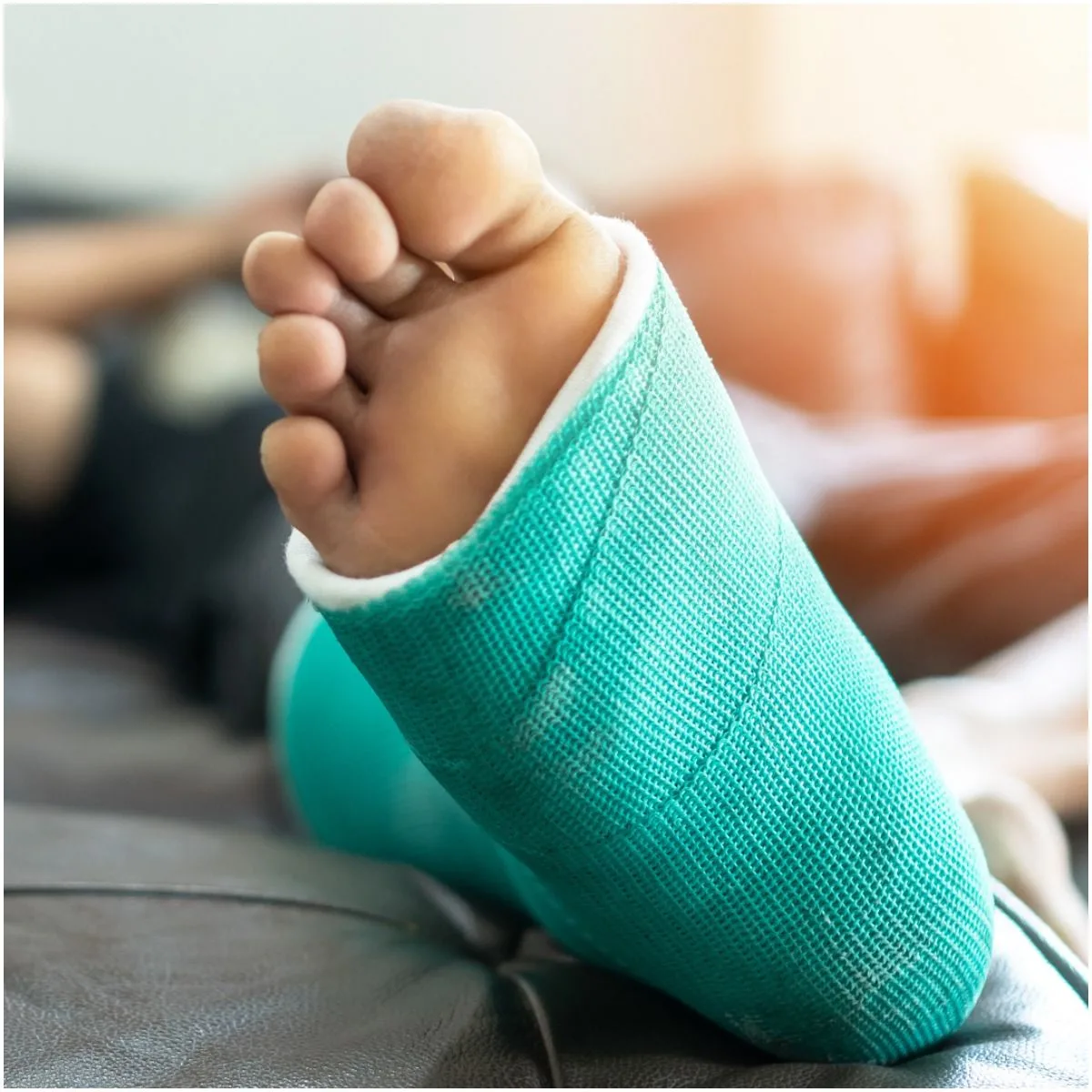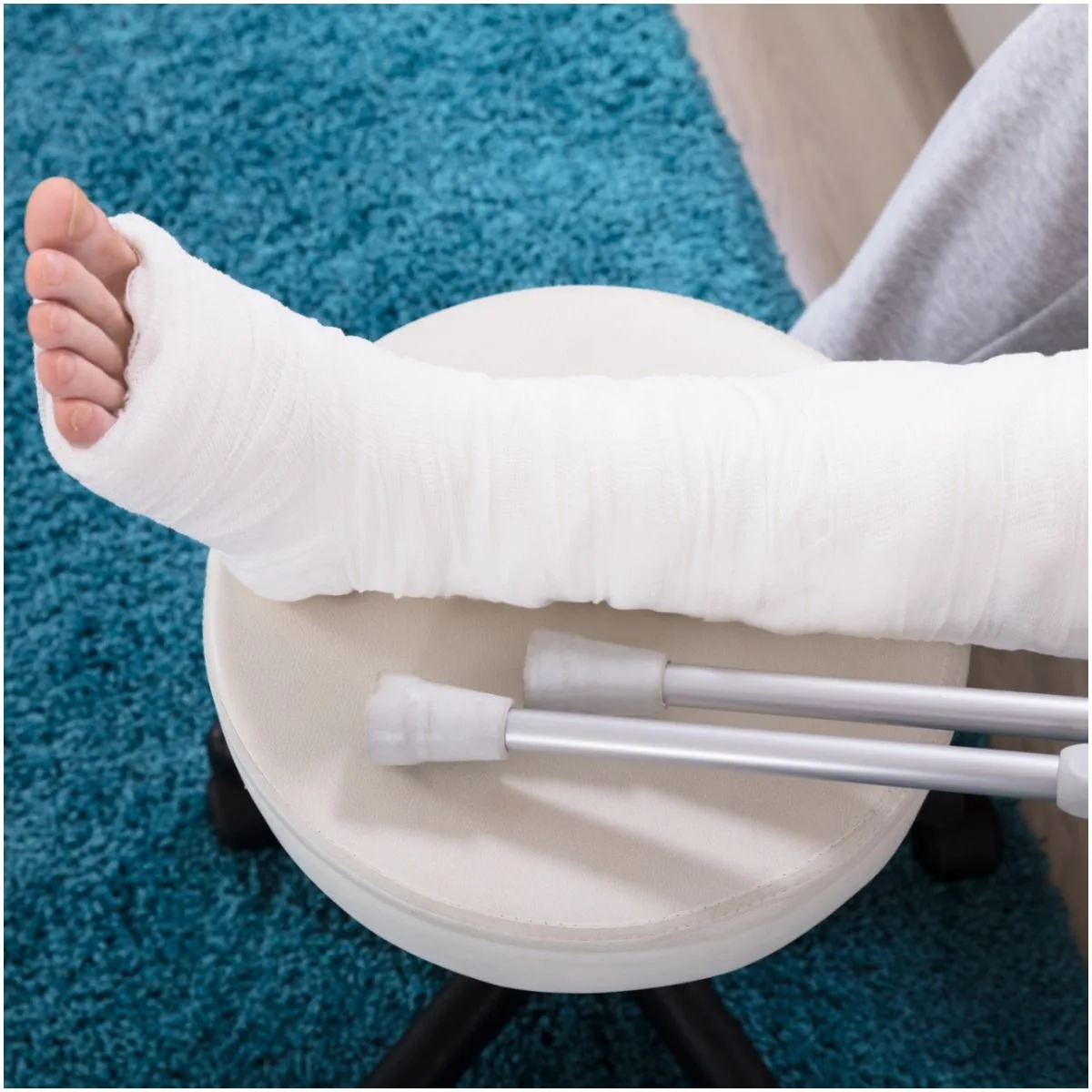A broken bone is called a fracture. Bones commonly break when they cannot withstand a trauma or force applied to them.
On rare occasions, the bones are so weak that they cannot withstand the force of gravity.
Reports indicate that over 6.4 million bone fractures occur annually in the US. In addition, the average person should expect to sustain 2 bone fractures throughout their lifetime.
Males are more at risk of broken bones before age 65, after which females become far more at risk.
According to statistics, 54 million people in the US are at risk of breaking a bone. Solely on the basis of growth in the elderly population most at risk, age-related fractures are projected to increase from 2.1 million in 2005 to over 3 million fractures in 2025.
Types
Common types of fractures include:
- comminuted fracture – in this type of fracture, the bone shatters into several pieces;
- oblique fracture – this type of fracture has an angled pattern;
- transverse fracture – this type of fracture has a horizontal fracture line;
- open fracture – the skin may be pierced by the bone which breaks the skin at the time of the fracture;
- stable fracture – the broken ends of the bone line up.
Symptoms
Common symptoms include:
- pain;
- bleeding (if it is an open fracture);
- swelling;
- the affected bone may have a grating sensation;
- bruising;
- feelings of nausea and sickness;
- discolored skin around the affected area;
- there may be dizziness;
- the patient may look pale and clammy;
- the sufferer cannot move the affected area;
- the sufferer is unable to put weight on the injured area;
- the affected area may be bent at an unusual angle.
Causes
Causes of broken bones can include:
Overuse
Stress fractures are tiny cracks that develop in the weight-bearing bones of the body, including the shinbone.
Injury
Traumatic incidents, like – vehicle accidents, sports injuries, and falls.
Cancer
Some types of cancer may cause bones to fracture more easily. The cancers most likely to spread to the bone include breast, prostate, kidney, lung, thyroid, and myeloma.
Risk Factors
If you have any of the following conditions, your chances of broken bones rise:
- history of prior fracture;
- osteopenia or osteoporosis;
- osteomalacia;
- Crohn’s disease, Celiac disease, and ulcerative colitis;
- diseases of the bones like cancer, Paget’s disease, or rheumatoid arthritis;
- hyper-parathyroid disease;
- sedentary lifestyle;
- kidney failure requiring dialysis;
- smoking tobacco;
- long-term medicines used for hypertension, asthma, seizures, thyroid conditions, breast cancer, blood thinners, sleeping pills, anxiety medications;
- long-term alcohol misuse;
- intestinal problems which prevent you from absorbing nutrients well;
- white race;
- female gender.
READ MORE: Nail Biting (Onychophagia) – Spiritual Meaning And Causes
Osteoporosis
Osteoporosis may cause bones to become less dense and more fragile.
Osteoporosis is commonly considered to be a condition that frail elderly women develop. But, the damage from this bone condition starts much earlier in life.
The disease is estimated to affect 200 million women worldwide. Also, osteoporosis causes around 9 million fractures annually.
In the United States, 1 out of 2 women over 50 will suffer an osteoporosis-related fracture during their lifetime.
READ MORE: Stuttering – Spiritual Meaning
Risk Factors For Osteoporosis
Common factors thought to increase the risk of osteoporosis may include:
- disorders of the adrenal glands, like – Cushing’s syndrome;
- a family history of osteoporosis;
- disorders of the pituitary gland (an endocrine gland about the size of a pea that plays a major role in regulating vital body functions);
- a parental history of hip fracture;
- hyperparathyroidism (overactivity of the parathyroid glands);
- a body mass index of 19 or less;
- if you are taking some drugs for prostate and breast cancer;
- long-term use of high-dose oral corticosteroids, medications that are useful in treating many conditions, such as lupus, rashes, and asthma;
- rheumatoid arthritis;
- having an eating disorder, like – bulimia or anorexia;
- long periods of inactivity, like – long-term bed rest;
- sedentarism;
- alcohol abuse;
- smoking tobacco and second-hand smoking;
- hyperthyroidism (overactive thyroid gland);
- malabsorption problems, as experienced in Crohn’s disease and coeliac disease;
- reduced amounts of sex hormones (testosterone and estrogen);
- drugs used for epilepsy;
- diseases, such as – chronic liver disease, rheumatoid arthritis, or kidney disease.
READ MORE: Restlessness – Spiritual Meaning
Spiritual Meaning of Broken Bones and Osteoporosis
Fractures reflect inflexibility and unilateral vision in life. Your attitude is too rigid and, as a result, it has knocked you down.
This can be prevented by becoming a little more humble. Now you have time to reflect on it and to realize that life is always on the move and constantly changing.
Learn to accept all aspects of life, to “flow” with them, and life will once again become a joy.
Images credit – Shutterstock
READ THIS NEXT: Grey Hair – Spiritual Meaning
Resources https://journals.lww.com/jbjsjopa/Citation/2015/03010/Osteoporosis_Case_Study.9.aspx https://www.sciencedirect.com/science/article/pii/S2405525516300565


